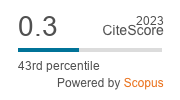Submissions
Submission Preparation Checklist
As part of the submission process, authors are required to check off their submission's compliance with all of the following items, and submissions may be returned to authors that do not adhere to these guidelines.- The text follows the stylistic and bibliographic criteria stated in the section «Normes per als autors/es».
- For submissions to peer-reviewed sections, the instructions in the section «Com assegurar una revisió cega» apply.
- The text has neither been published previously, nor has it been simultaneously sent to another journal for publication.
- The submission reports whether the research source data are gender-sensitive to allow identification of possible differences.
Copyright Notice
The author publishing in this journal agrees to the following terms.
a. Author retains the copyright and grants the journal the right of first publication of the work.
b. Texts will be disseminated under the Creative Commons Attribution-NonCommercial-No Derivative Works licence, which allows the work to be shared with third parties, provided that they acknowledge authorship, their initial publication in this journal, and the terms of the licence. It is not permitted to make commercial use of the work nor to
distribute derivative works without the copyright holder's explicit permission.
More information in https://creativecommons.org/licenses/by-nc-nd/4.0/deed.es
Privacy Statement
Body responsible | Office of the General Secretary of the University of Barcelona |
Objective | If you register as an author or reviewer, the objective will be to organize the completion of the different functions associated with the journal to which you register. If you register as a reader, the objective will be to send you information about the journal to which you register. |
Legitimate basis | Consent of the interested party |
Target audience | The University and those responsible for the processing, if applicable. The transfer of data to third parties is not covered, except when there is a legal obligation. |
Rights | Right of access, right to rectification, right to erasure of your data, right to request data portability and restriction of processing. |
Additional information | For further information, please visit this link: http://hdl.handle.net/2445/122803 |




